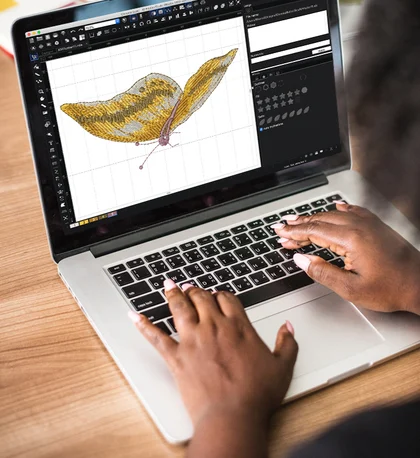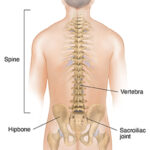Introduction
The embroidery world is divided between two camps: those who swear by lightning-fast AI-powered DST conversion and traditionalists who insist manual digitizing delivers superior results. But when searching for the best DST file converter for your needs, how do you choose between these competing approaches?
In this guide, we’ll help you find the best DST file converter solution by breaking down:
- How AI conversion works (and where even the best DST file converter tools fall short)
- When manual digitizing is worth the extra time and investment
- Cost comparisons for different project types
- Quality differences you can expect between methods
- Hybrid approaches that give you the best of both worlds
Whether you’re a hobbyist creating occasional designs or a professional embroiderer handling client work, understanding these conversion methods will help you select the best DST file converter approach for your specific workflow and quality requirements.
Understanding DST File Conversion
What Makes DST Files Special
DST (Design Stitch Tajima) remains the industry standard because:
- Contains precise machine commands (not just stitch data)
- Maintains perfect compatibility with industrial machines
- Supports complex designs with multiple color changes
- Includes crucial jump stitch information
The Conversion Challenge
Converting to DST isn’t just file translation – it’s about:
- Preserving design integrity
- Optimizing stitch paths
- Preventing thread breaks
- Minimizing unnecessary trims
AI-Powered DST Conversion Explained
How AI Conversion Works
Modern tools use machine learning to:
- Analyze image contours and colors
- Predict optimal stitch types and directions
- Automatically sequence color changes
- Generate machine-ready DST files
Top AI Conversion Tools
- Wilcom TrueSizer (with AI assist)
- Hatch AI Digitizer
- Embrilliance Express
- Online converters (DSTMagic, MyEditor)
When AI Shines
AI works best for:
✔ Simple designs with clear edges
✔ Low-detail vector artwork
✔ Quick turnaround projects
✔ Beginners learning digitizing concepts
Manual DST Conversion: The Traditional Approach
The Manual Process
Professional digitizers:
- Hand-trace design elements
- Strategically assign stitch types
- Customize stitch angles and density
- Manually sequence color changes
- Add specialized underlay
Recommended Manual Tools
- Wilcom EmbroideryStudio
- Pulse Tajima DG/ML
- Brother PE-Design
When Manual Excels
Manual dominates for:
✔ Complex designs with fine details
✔ Photorealistic embroidery
✔ Specialty fabrics (stretch, delicate)
✔ Brand-critical logo work
Head-to-Head Comparison
Quality Factors
| Factor | AI | Manual |
|---|---|---|
| Stitch Efficiency | ★★★ | ★★★★★ |
| Detail Preservation | ★★☆ | ★★★★★ |
| Color Accuracy | ★★★ | ★★★★★ |
| Fabric Adaptation | ★★☆ | ★★★★★ |
Time Investment
| Project Type | AI Time | Manual Time |
|---|---|---|
| Simple logo | 5-15 min | 30-60 min |
| Detailed artwork | 15-30 min | 2-4 hours |
| Photorealistic | 30+ min | 4-8 hours |
Cost Considerations
| Method | Software Cost | Per-Project Cost |
|---|---|---|
| AI Tools | $100-$500/year | $0-$5 |
| Manual | $500-$5,000 | $20-$200 |
| Hybrid | $300-$1,500 | $5-$50 |
Business Implications
For Hobbyists & Small Businesses
AI advantages:
- Lower upfront costs
- Faster results
- Easier learning curve
For Professional Digitizers
Manual benefits:
- Higher quality output
- Customization for clients
- Ability to handle complex jobs
Production Environments
Hybrid approach:
- Use AI for initial conversion
- Manual touch-up on critical elements
- Best balance of speed and quality
Hybrid Workflows: Best of Both Worlds
Smart Hybrid Strategies
- AI First Pass: Let software handle basic conversion
- Manual Refinement: Adjust problem areas
- AI Optimization: Use tools to minimize jumps/trims
Recommended Hybrid Tools
- Hatch Embroidery (AI+manual tools)
- Embrilliance StitchArtist
- SewWhat-Pro + manual editing
Troubleshooting Conversion Issues
Common AI Problems (And Fixes)
Issue: Poor stitch paths
Solution: Manually adjust stitch directions
Issue: Lost small details
Solution: Add manual running stitches
Issue: Excessive thread trims
Solution: Re-sequence color changes
Manual Conversion Challenges
Issue: Time-consuming
Solution: Create templates for recurring elements
Issue: Steep learning curve
Solution: Take online certification courses
Future of DST Conversion
Emerging Technologies
- Better AI prediction models
- Cloud-based collaborative digitizing
- Real-time stitch simulation
The Human Element
Even as AI improves:
- Artistic judgment remains crucial
- Fabric knowledge can’t be fully automated
- Client customization requires human touch
Making Your Choice
When to Choose AI
- You need fast results
- Budget is limited
- Designs are simple
- Learning digitizing basics
When to Choose Manual
- Quality is paramount
- Working with complex designs
- Handling specialty fabrics
- Serving demanding clients
When to Go Hybrid
- You want reasonable speed with good quality
- Handling mixed complexity projects
- Building your digitizing skills
Conclusion
The AI vs. manual DST conversion debate doesn’t have a one-size-fits-all answer. AI tools offer incredible speed and accessibility, while manual digitizing delivers unmatched quality and customization. Your best choice depends on your projects, clients, and business model.
Many embroiderers find the hybrid approach offers the perfect balance – leveraging AI efficiency while maintaining manual control where it matters most. As you experiment with both methods, you’ll develop your own workflow that delivers the right results for your specific needs.
The embroidery machines are waiting – will your next DST file come from AI, human hands, or the best combination of both?
Frequently Asked Questions
Q: Can AI completely replace manual digitizing?
A: Not currently – AI still struggles with complex designs and fabric-specific adjustments that humans handle easily.
Q: How much quality difference is there really?
A: For simple designs, minimal difference. For complex work, manual can be 30-50% better in stitch efficiency and detail.
Q: What’s the fastest way to get started with digitizing?
A: Begin with AI tools to learn basics, then gradually incorporate manual techniques as you advance.
Q: Do professionals ever use AI tools?
A: Yes – many use AI for initial conversions then manually refine, saving 20-40% time on projects.
Q: Which method is more cost-effective for small businesses?
A: AI or hybrid approaches typically offer better ROI for shops doing mostly simple to moderate complexity work.



